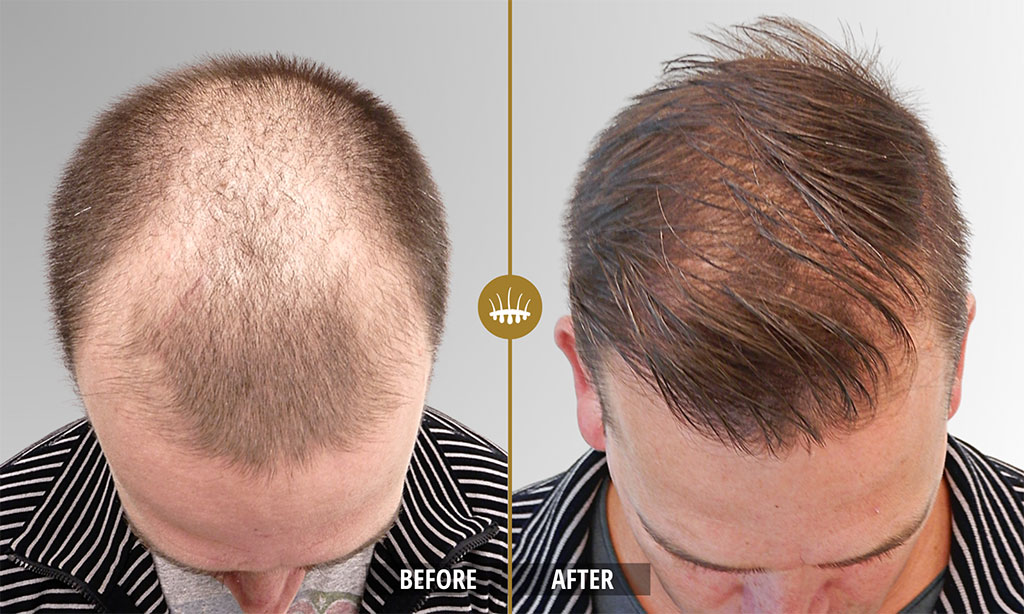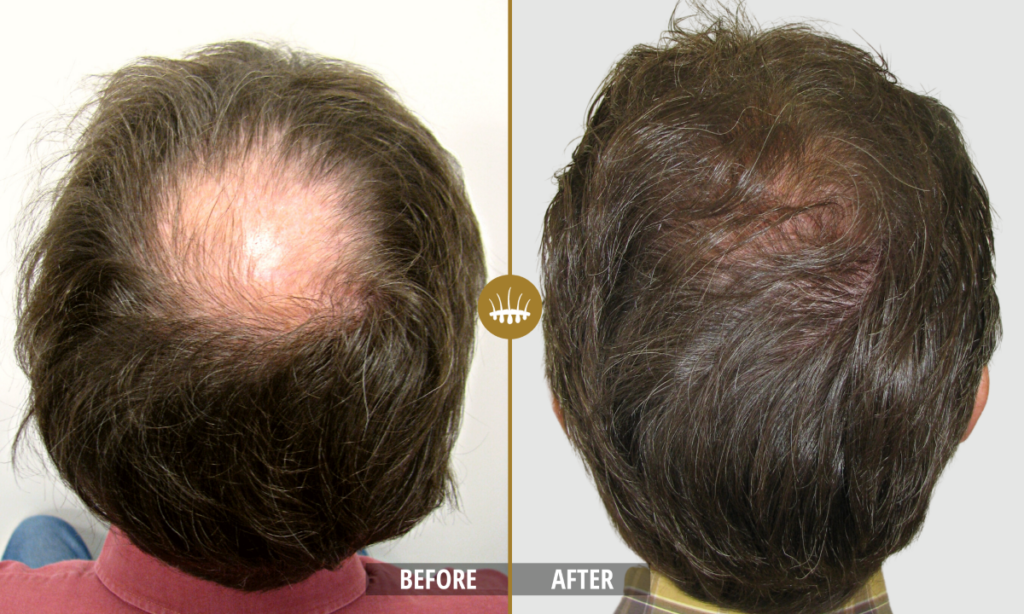Male hair loss
Hair loss in men can arise from a variety of factors. While genetics, ageing, and hormonal changes remain the most common causes, other medical, lifestyle, and environmental influences may also contribute. A proper diagnosis by a medical specialist is essential to identify the exact cause and determine the best treatment.

CAUSES OF HAIR LOSS IN MEN
Other causes of hair loss
While androgenetic alopecia is a natural, age-related genetic condition rather than a disease, other causes of hair loss include hair disorders like alopecia areata, medication side effects, stress, hormonal imbalances (unrelated to genetics), and external factors such as an unhealthy diet. A thorough diagnosis by a medical specialist is essential before starting any treatment.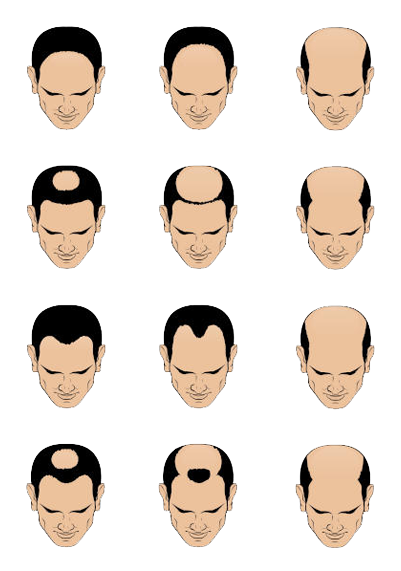
Norwood-classification for Male Pattern Hair Loss
Facts & figures
characteristics of hereditary baldness
Hereditary baldness follows a distinct, recognisable pattern that professionals can easily diagnose. In men, it is characterised by a receding hairline, thinning at the temples, and a bald crown. A key feature is that hair on the sides and back of the head (the ‘wreath’) remains unaffected by DHT.
Permanent hair loss
Another characteristic is hair miniaturisation, where each growth cycle produces progressively thinner hairs until only fine, downy hair remains. This is the final stage before the hair falls out permanently and does not regrow. This process is irreversible. However, hereditary male pattern baldness can be effectively treated with the HST method.

Impact of baldness
Is it temporary or permanent?
In addition to hereditary baldness, hair loss can also result from diseases, stress, medication, and hormonal fluctuations. Non-genetic hair loss is often temporary and typically resolves once the underlying cause is addressed. However, hereditary baldness is permanent; once the hair has fallen out, it does not regrow on its own.
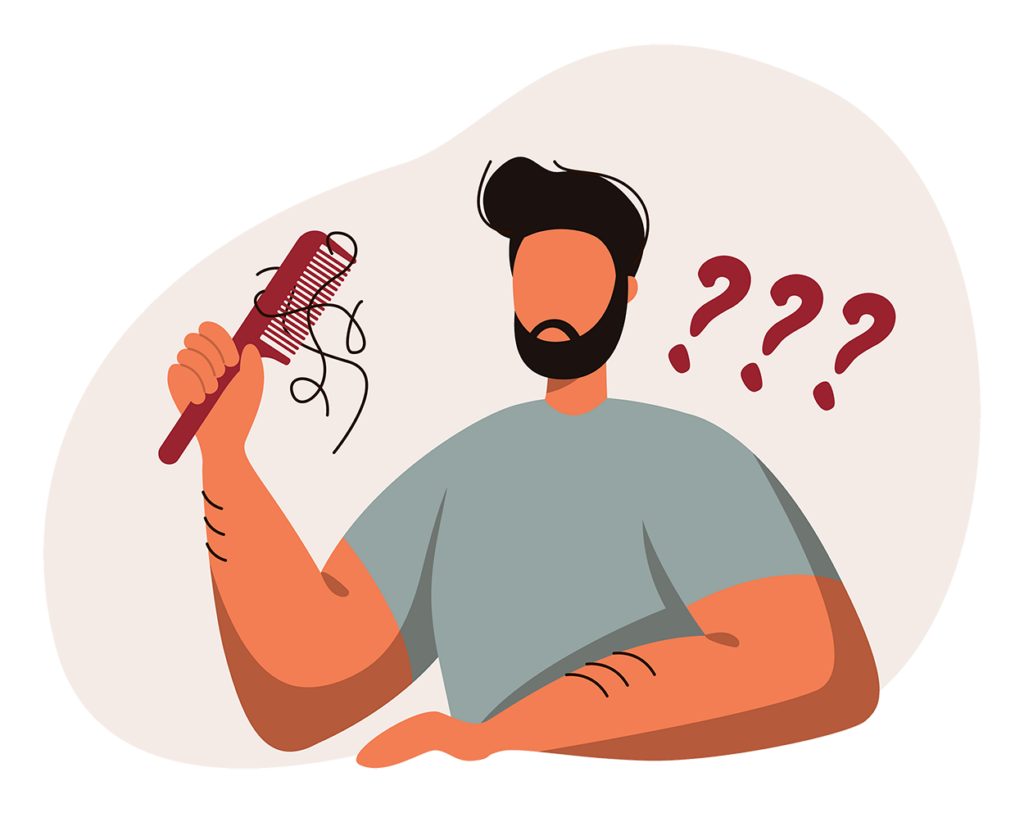
Hair loss - what's normal?
Hair growth progresses through three phases: the growth phase, the transition phase, and the resting phase. Typically, at least 85% of our hair is in the growth phase, while the remaining 15% is lost during the transition and resting phases.
Temporary hair loss
Hair loss can be temporarily worsened by factors such as stress, seasonal changes, hormonal fluctuations, and medication. Non-genetic hair loss is usually temporary and often recovers once the underlying cause is addressed. In contrast, hereditary baldness is permanent and does not reverse on its own.
Losing more and more hair
Up to the age of thirty, losing up to fifty hairs a day is normal. This number can increase to up to eighty hairs per day by age fifty, and up to one hundred hairs per day after fifty. Normal daily hair loss often goes unnoticed because it occurs gradually and evenly across the scalp rather than in one specific area.
Hair loss by age group
| <30 years: | 50 hairs per day hair loss |
| <50 years: | 80 hairs per day hair loss |
| >50 years: | 100 hairs per day hair loss |
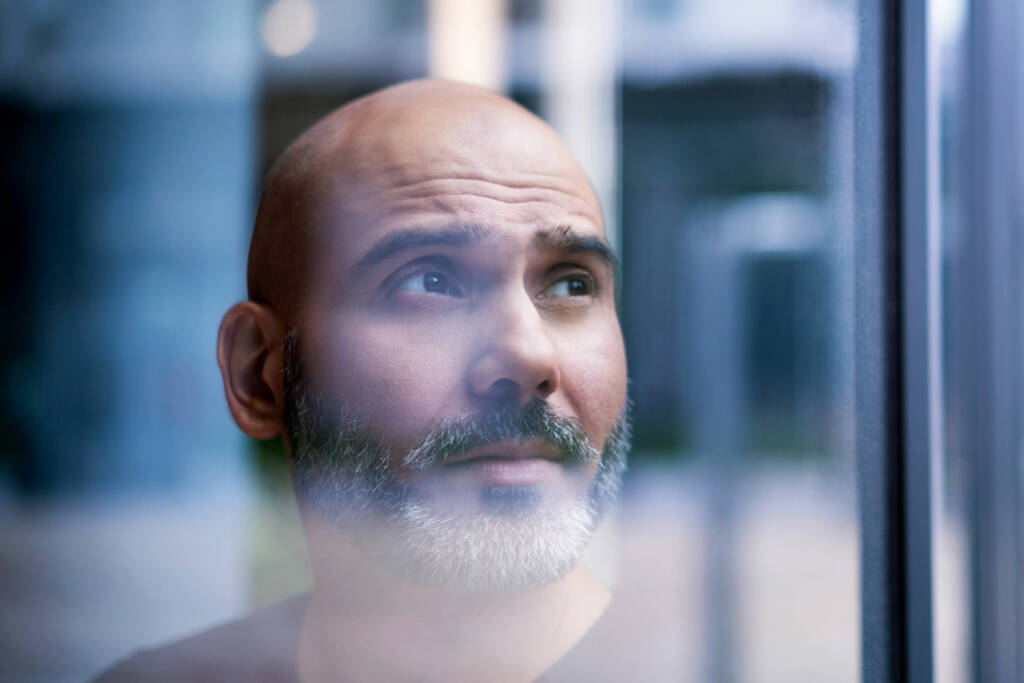
Psychological effects of baldness
Yes, baldness can have significant psychological effects. When dealing with alopecia, your appearance can be unexpectedly and dramatically altered by factors beyond your control. While it is not life-threatening and does not indicate illness, the involuntary and visible change in appearance can lead to considerable insecurity, especially at a young age. Therefore, it is a serious issue that deserves careful attention.
Inlets
Crown
Thinning hair on the crown is a sign of androgenetic alopecia, where DHT shortens the hair growth phase from several years to just a few months. This results in progressively thinner hair and visible scalp. The typical pattern – receding hairline, thinning at the temples, and bald crown – is characteristic of hereditary male pattern baldness. The good news is that this type of hair loss can be effectively treated with HST.
Facial hair
Male pattern baldness can affect facial hair as well. If you have bald spots in your beard or want a fuller beard or moustache, an HST beard transplant can provide a permanent solution, even for areas with scars or burns. Like a regular hair transplant, the procedure uses hair from a donor area to implant new hairs in areas where growth is lacking.
FOLLOW-UP TREATMENT
HST offers permanent results, with transplanted hairs continuing to grow for a lifetime. If you experience hair loss elsewhere or have additional hair needs after a previous transplant, follow-up treatments are possible, as the donor area remains intact. Additionally, Hair Science Clinic specialises in reconstructive surgery to correct failed transplants with visible scars or unnatural hairlines from other clinics.

Get professional advice
A proper diagnosis is crucial for identifying the cause of your hair loss and selecting the right treatment. During a free consultation with one of our doctors, we will review your personal situation and preferences. You will discuss your options and expectations with the doctor, who will then provide a customised treatment plan.
Good to know
Hair loss is often temporary and treatable, especially if it is structural. For many types of baldness, a Hair Stem-cell Transplant (HST) provides an effective solution with natural, aesthetically pleasing results.


